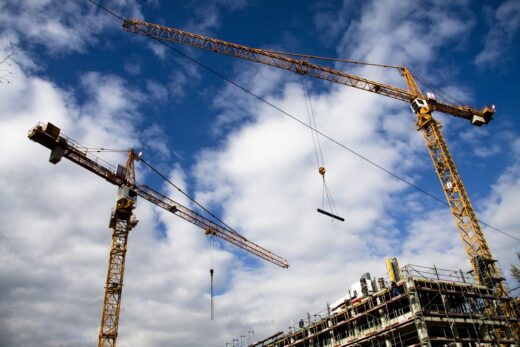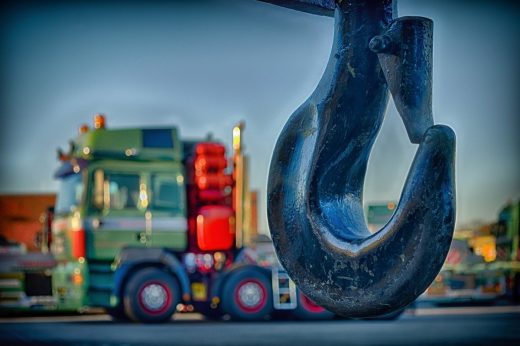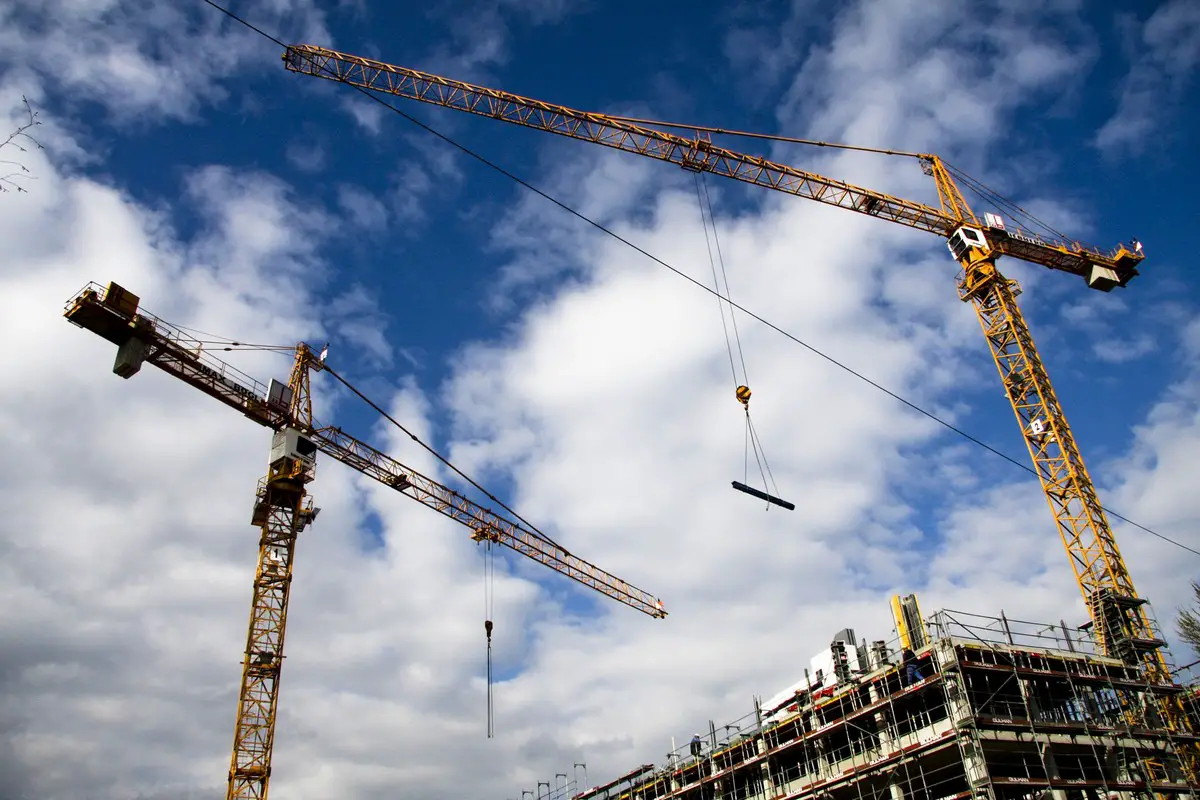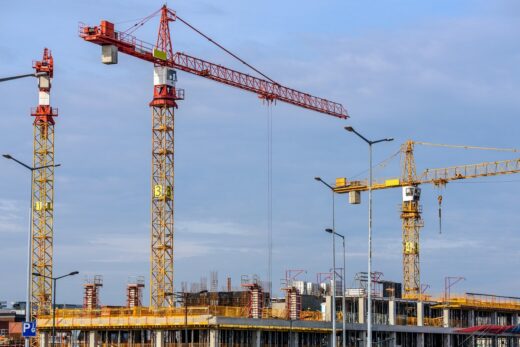Different types of cranes guide, Construction sites heavy machinery, Building and demolition project lifting advice
The different types of cranes
17 May 2022
A crane is a piece of heavy machinery equipped with cables and pulleys and used to lift and lower materials safely and efficiently.
Whilst cranes are a staple in the construction industry and there are several types available, they are suitable for different circumstances and environments.
So, how do you determine which crane is best for your project?

Let’s take a look at some of the most common crane types and their uses.
Static cranes
Exactly as its name implies, a static crane is a permanent structure that’s fixed to the ground or a building. Unlike a mobile crane which can be moved from A to B, static cranes lift and move goods along a fixed path.
- Overhead cranes – used to increase safety and efficiency within warehouses or construction sites.
They have an overhead bridge that moves back and forth along a runway on a track or rail. A trolley and hoist move from side to side along the horizontal beam (bridge), lifting and lowering loads throughout a rectangular bay.
- Tower cranes – used to construct tall buildings such as skyscrapers. Self-erecting tower cranes are ideal for use where frequent erection, dismantling and transportation are required.
Tower cranes feature a vertical tower (mast) and an outstretched jib which a trolley and hook block travel along. When set up correctly, they provide the best height and lifting capabilities.
Mobile cranes
A mobile crane is usually mounted on treads or wheels and has an outstretched boom (also known as a lattice or telescopic boom). The boom can rotate up to 360 degrees and, depending on the type and size of the crane, extends to varying lengths.
- Crawler cranes – the largest type of mobile crane used to lift large, cumbersome loads at great heights – even in soft and boggy ground conditions.
- These heavy-duty cranes typically require the most on-site assembly (i.e. attaching the tracks, assembling the lattice boom and adding counterweights). However, they do not require the use of outriggers as the treads provide adequate stability and support.
- All-terrain cranes – used to lift and move heavier loads than rough terrain cranes – both on the road and most off-road surfaces.
All-terrain cranes have anywhere between 4-18 tyres, depending on the size of the crane, and a telescopic boom mounted onto the bed of the truck. They are operated from a cab that pivots over the truck bed together with the boom.
Which crane should you hire?
Now you know a little more about the common types of cranes for construction, you should have a better idea of whether a static or mobile crane is best for your project.
However, if you’re spoilt for choice, it’s worth contacting a reputable crane hire company, like Bryn Thomas Cranes.
They have an extensive fleet of cranes at their disposal – including a variety of static and mobile cranes. They also supply mobile tower cranes which combine the best features of a telescopic mobile crane with a conventional static tower. These facilitate rapid set-up times and are suitable for use in narrow streets where access is often limited.
If you’d like to know more about the different types of cranes Bryn Thomas Cranes provide or you need an expert opinion, be sure to give them a call on 01352 733 984.
Comments on this guide to Different types of cranes article are welcome.
Cranes
Cranes Posts
Rental cranes for tough jobsites
Guide to choosing the ideal truck-mounted crane
Builder’s guide to 7 types of construction cranes
Building Design
Building Design Posts
Guide to choosing the ideal truck-mounted crane
Builder’s guide to 7 types of construction cranes

Buildings
Residential Architecture Articles
Comments / photos for the Different types of cranes advice page welcome






